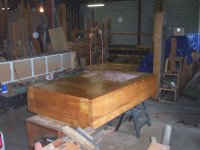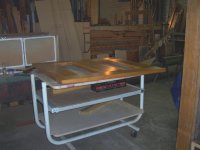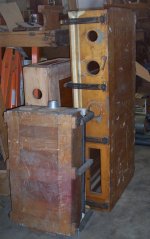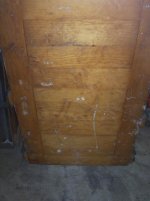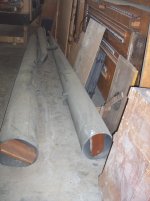9100
Diamond
- Joined
- Nov 1, 2004
- Location
- Webster Groves, MO
I have been working on the restoration of a huge pipe organ. Actually, restoration may not be the correct term since the owner wants wood structure that was originally the typical mill finish like you see on 2X4s to become a furniture class one. We have most of the standard sanders, hand planes and a planer, but most of the work is done with straight line sanders as are common in auto body shops. We have two, a Sioux and and Air Tools Company Of America, both bought used. The ATCOA is a little smoother and consistent, but that can be just be individual condition. I keep the two set up with different grits. We need at least one more and possibly two, all hooked up so we can switch between grits as needed. This is going to be heavy use, all day for several years. I want new ones, American made, both from the "buy American" viewpoint, but even more so we can get service. No Asian garbage! The ATCOA lists for $275, lower prices online, the Ingersoll Rand goes for about $130, marked Made in USA on the box. Sioux doesn't seem to sell them anymore. The price is not the issue here, but whether it is worth the extra money. Does anyone have experience with either of these or comparable ones?
Bill
Bill


